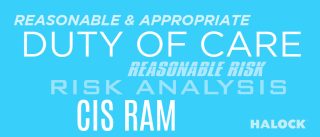Reasonable Security & Reasonable Risk
Gain expert guidance on navigating cybersecurity risk assessments, implementing reasonable security practices, and managing cyber risk to acceptable levels using duty of care or DoCRA. This category explores how to define and assess reasonable security and risk in line with your organization’s legal and regulatory standards, while offering practical strategies for threat modeling, risk prioritization, and control implementation. Learn how to effectively communicate cyber risk to executives and boards, justify security investments, and build a risk-informed cybersecurity program that balances protection with business objectives. Establish duty of care while incorporating your organization’s mission, objectives, and obligations.
Threat Forecasting to Foresee Your Next Breach
Chris Cronin introduces the concept of threat forecasting, emphasizing the use of open (more…)


